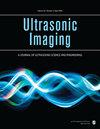用食人鱼觅食优化法优化超声图像中的甲状腺结节分类 SPGAN
IF 2.5
4区 医学
Q1 ACOUSTICS
引用次数: 0
摘要
在这项研究工作中,提出了通过食人鱼觅食优化技术优化的用于超声图像甲状腺结节分类的语义保留生成对抗网络(SPGAN-PFO-TNC-UI)。首先,从 DDTI 数据集中收集超声图像。然后将输入图像送入预处理步骤。在预处理阶段,采用多窗口萨维茨基-戈莱滤波器(MWSGF)来减少噪声,提高超声波(US)图像的质量。预处理后的输出将提供给广义直觉模糊 C-Means 聚类(GIFCMC)。在这里,超声图像的感兴趣区(ROI)被分割。分割输出将提供给全数值拉普拉斯变换(FNLT)以提取特征,如实体、方向、圆度、主轴长度、次轴长度、边界框、凸区等几何特征,以及面积、周长、长宽比和 AP 比等形态特征。语义保留生成对抗网络(SPGAN)将图像分为良性和恶性结节。一般来说,SPGAN 并不表达任何优化适应方法来确定最佳参数,以确保甲状腺结节的准确分类。因此,我们提出了食人鱼觅食优化(PFO)算法来改进 SPGAN 分类器,准确识别甲状腺结节。对 F 分数、准确率、错误率、精确度、灵敏度、特异性、ROC、计算时间等指标进行了研究。提出的 SPGAN-PFO-TNC-UI 方法的精确度分别提高了 30.54%、21.30%、27.40% 和 18.92%,错误率分别降低了 26.97%、20.41%、15.09% 和 18.27%。与现有技术相比,误差率降低了 27%,如使用 DNN 与混合元神经元和 LSTM(TD-DL-HMH-LSTM)进行甲状腺检测和分类、用于优化甲状腺结节分类的量子启发卷积神经网络(QCNN-OTNC)、基于正则化领导优化的深度神经网络下的甲状腺结节分类(CTN-FRL-DNN)、使用视觉变换器和生成对抗网络的超声甲状腺图像自动分类(ACUTI-VT-GAN)。本文章由计算机程序翻译,如有差异,请以英文原文为准。
SPGAN Optimized by Piranha Foraging Optimization for Thyroid Nodule Classification in Ultrasound Images
In this research work, Semantic-Preserved Generative Adversarial Network optimized by Piranha Foraging Optimization for Thyroid Nodule Classification in Ultrasound Images (SPGAN-PFO-TNC-UI) is proposed. Initially, ultrasound images are gathered from the DDTI dataset. Then the input image is sent to the pre-processing step. During pre-processing stage, the Multi-Window Savitzky-Golay Filter (MWSGF) is employed to reduce the noise and improve the quality of the ultrasound (US) images. The pre-processed output is supplied to the Generalized Intuitionistic Fuzzy C-Means Clustering (GIFCMC). Here, the ultrasound image’s Region of Interest (ROI) is segmented. The segmentation output is supplied to the Fully Numerical Laplace Transform (FNLT) to extract the features, such as geometric features like solidity, orientation, roundness, main axis length, minor axis length, bounding box, convex area, and morphological features, like area, perimeter, aspect ratio, and AP ratio. The Semantic-Preserved Generative Adversarial Network (SPGAN) separates the image as benign or malignant nodules. Generally, SPGAN does not express any optimization adaptation methodologies for determining the best parameters to ensure the accurate classification of thyroid nodules. Therefore, the Piranha Foraging Optimization (PFO) algorithm is proposed to improve the SPGAN classifier and accurately identify the thyroid nodules. The metrics, like F-score, accuracy, error rate, precision, sensitivity, specificity, ROC, computing time is examined. The proposed SPGAN-PFO-TNC-UI method attains 30.54%, 21.30%, 27.40%, and 18.92% higher precision and 26.97%, 20.41%, 15.09%, and 18.27% lower error rate compared with existing techniques, like Thyroid detection and classification using DNN with Hybrid Meta-Heuristic and LSTM (TD-DL-HMH-LSTM), Quantum-Inspired convolutional neural networks for optimized thyroid nodule categorization (QCNN-OTNC), Thyroid nodules classification under Follow the Regularized Leader Optimization based Deep Neural Networks (CTN-FRL-DNN), Automatic classification of ultrasound thyroids images using vision transformers and generative adversarial networks (ACUTI-VT-GAN) respectively.
求助全文
通过发布文献求助,成功后即可免费获取论文全文。
去求助
来源期刊

Ultrasonic Imaging
医学-工程:生物医学
CiteScore
5.10
自引率
8.70%
发文量
15
审稿时长
>12 weeks
期刊介绍:
Ultrasonic Imaging provides rapid publication for original and exceptional papers concerned with the development and application of ultrasonic-imaging technology. Ultrasonic Imaging publishes articles in the following areas: theoretical and experimental aspects of advanced methods and instrumentation for imaging
 求助内容:
求助内容: 应助结果提醒方式:
应助结果提醒方式:


